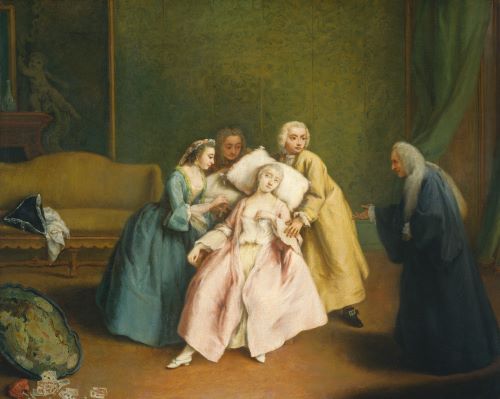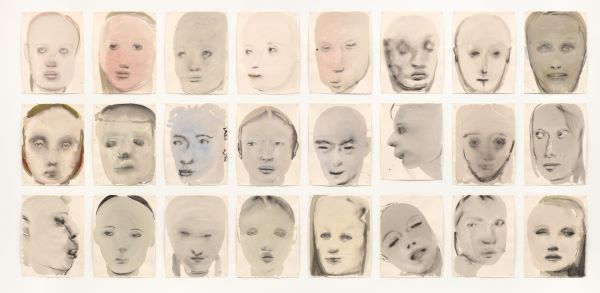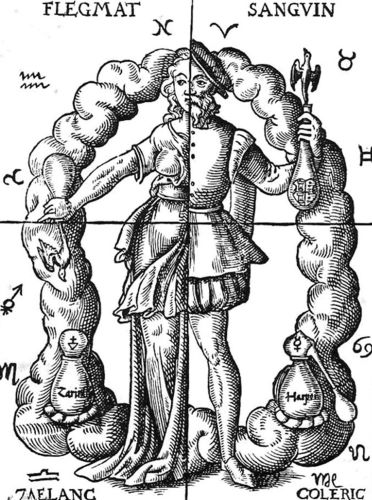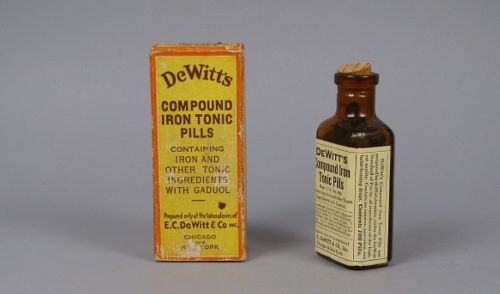

Its legacy endures in the study of psychosomatic disorders.

By Matthew A. McIntosh
Public Historian
Brewminate
Introduction
In the pantheon of 19th-century diseases, chlorosis—more evocatively known as “green sickness”—occupied a curious place. It was a diagnosis reserved almost exclusively for young women and saturated with cultural, moral, and physiological meaning. The Victorian era, with its intense preoccupation with the regulation of female behavior and bodily purity, elevated chlorosis beyond mere pathology to a symbol of the perceived fragility of womanhood. This essay explores chlorosis as a gendered diagnosis, its medical treatment and cultural interpretations, and its eventual disappearance with the rise of biochemical medicine. Chlorosis reveals how Victorian medical thinking intertwined somatic symptoms with social anxieties about femininity, sexuality, and class.
Defining the Disease: Symptoms and Demographics

The term “chlorosis” derived from the Greek chloros, meaning greenish-yellow, referring to the pallid, often green-tinged skin tone that afflicted its sufferers. Descriptions of the disease in Victorian medical literature consistently listed pale complexion, weakness, breathlessness, disturbed appetite (notably including pica, the craving for non-nutritive substances such as chalk or clay), and menstrual irregularities as key symptoms.1 Chlorosis was understood as a “female malady,” striking mostly middle- and upper-class girls between puberty and marriage—those in liminal phases of life and social utility.2
Though today its symptoms would likely be recognized as signs of iron-deficiency anemia, Victorian physicians approached chlorosis not just as a hematological condition but as a disorder of temperament, environment, and morality. Physicians such as Thomas Laycock and Charles Murchison linked chlorosis with “insufficient vitality,” an imbalance caused not only by diet but also by emotional repression and sexual frustration.3
Chlorosis and the Moral Body

More than a physiological disorder, chlorosis was imbued with moral symbolism. In the heavily gendered worldview of Victorian medicine, the female body was thought to be governed by reproductive purpose. A woman who had not yet menstruated, or whose cycles were irregular, was “unfulfilled,” and this lack of reproductive function was blamed for her malaise. Chlorosis thus emerged as both a metaphor and a warning—of the dangers of deviating from normative feminine life courses.4
Moreover, chlorosis often became a proxy diagnosis for what was perceived as emotional or psychological imbalance. Some physicians believed the illness could be triggered by romantic disappointment or the thwarting of sexual impulses. The disease thereby functioned as a psychosomatic narrative of sexual repression. “She pines, she fades,” wrote one Victorian physician, echoing Shakespeare’s Ophelia, as if chlorosis were not merely a condition of the blood but a heartbreak embodied.5
Class and Control

Chlorosis also reflected class anxieties. It was far more commonly diagnosed in the daughters of the bourgeoisie than among working-class women. The former were expected to be idle, delicate, and morally upright, and their lives were often marked by confinement and limited physical activity. Physicians believed that this refined but inactive lifestyle contributed to the development of chlorosis, reinforcing the ideal of female frailty while blaming women for succumbing to it.6
Prescriptions often included tonics, iron supplements, moderate exercise, travel, and—crucially—marriage. Marriage was seen as both cure and prevention, restoring women to their natural role and realigning their physical health with social expectations. In this light, chlorosis was less a medical diagnosis than a moral and social correction—a gentle nudge back toward proper femininity.7
Medical Treatments and the Path Toward Decline

The standard treatment for chlorosis was the administration of iron tonics, particularly ferrous sulfate dissolved in acidic syrups. This treatment, surprisingly effective in many cases, masked the underlying misdiagnosis by inadvertently treating iron-deficiency anemia.8 Physicians also prescribed cod-liver oil, arsenic, and even bleeding, depending on the prevailing humoral theories of individual practitioners. More often, however, treatment included changes in behavior and environment: increased exposure to fresh air, lighter clothing, and greater physical movement.
By the late 19th century, advances in hematology and nutritional science began to erode the conceptual framework of chlorosis. Researchers like George Oliver and Richard Cabot demonstrated through blood analysis that the condition was indeed due to a deficiency of hemoglobin, shifting understanding away from moral causes toward nutritional ones.9 With the rise of laboratory medicine and the marginalization of gendered diagnoses, chlorosis slowly disappeared from medical literature. By the early 20th century, the term was virtually obsolete.
The Disappearance of a Gendered Diagnosis
The vanishing of chlorosis from medical discourse was not simply the result of scientific progress but also a shift in cultural attitudes. The medicalization of female behavior remained, but it took new forms—such as hysteria or neurasthenia. Chlorosis had served its historical function, policing young women’s bodies and desires under the guise of medicine. Its decline marked a moment in which cultural authority began to yield—however slightly—to empirical evidence. Yet, its legacy endures in the study of psychosomatic disorders and in the history of women’s health. Chlorosis stands as a case study in how disease categories are not merely reflections of biological reality but are shaped by social values, medical ideologies, and cultural fears. The Victorian girl, pale and pining, was not just anemic; she was the canvas onto which society projected its deepest anxieties about gender and control.
Appendix
Endnotes
- William Buchan, Domestic Medicine (London: Blackie & Son, 1849), 215.
- Helen King, The Disease of Virgins: Green Sickness, Chlorosis and the Problems of Puberty (London: Routledge, 2004), 92.
- Charles Murchison, Clinical Lectures on Diseases of the Liver (London: Henry Renshaw, 1877), 288.
- Elaine Showalter, The Female Malady: Women, Madness, and English Culture, 1830–1980 (New York: Pantheon Books, 1985), 39.
- Ibid., 42.
- Joan Busfield, “The Female Malady? Men, Women and Madness in Nineteenth Century Britain,” Sociology 28, no. 1 (1994): 259.
- Susan E. Cayleff, Wash and Be Healed: The Water-Cure Movement and Women’s Health (Philadelphia: Temple University Press, 1995), 136.
- Andrew Wear, “Medical Practice in Late Seventeenth- and Early Eighteenth-Century England: Continuity and Union,” in The Medical Revolution of the Seventeenth Century, ed. Roger French and Andrew Wear (Cambridge: Cambridge University Press, 1989), 302.
- Richard Cabot, Physical Diagnosis (New York: William Wood & Co., 1904), 45.
Bibliography
- Buchan, William. Domestic Medicine. London: Blackie & Son, 1849.
- Busfield, Joan. “The Female Malady? Men, Women and Madness in Nineteenth Century Britain.” Sociology 28, no. 1 (1994): 259–277.
- Cabot, Richard. Physical Diagnosis. New York: William Wood & Co., 1904.
- Cayleff, Susan E. Wash and Be Healed: The Water-Cure Movement and Women’s Health. Philadelphia: Temple University Press, 1995.
- King, Helen. The Disease of Virgins: Green Sickness, Chlorosis and the Problems of Puberty. London: Routledge, 2004.
- Murchison, Charles. Clinical Lectures on Diseases of the Liver. London: Henry Renshaw, 1877.
- Showalter, Elaine. The Female Malady: Women, Madness, and English Culture, 1830–1980. New York: Pantheon Books, 1985.
- Wear, Andrew. “Medical Practice in Late Seventeenth- and Early Eighteenth-Century England: Continuity and Union.” In The Medical Revolution of the Seventeenth Century, edited by Roger French and Andrew Wear, 294–314. Cambridge: Cambridge University Press, 1989.
Originally published by Brewminate, 06.25.2025, under the terms of a Creative Commons Attribution-NonCommercial-NoDerivatives 4.0 International license.


